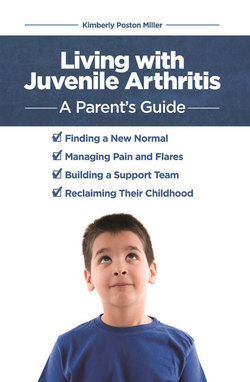Читать книгу Living with Juvenile Arthritis - Kimberly Poston Miller - Страница 12
На сайте Литреса книга снята с продажи.
ОглавлениеCHAPTER FOUR
The Team Approach
Now that you’ve learned a little about the opponent and met a few players, it’s time for you to assemble your own team … your healthcare team, that is. Treatment plans for juvenile arthritis (JA) are highly individualized because each child responds differently to medications and therapies and may have varied body parts and systems that are affected. This is why it’s so important to select the right healthcare team for your child. Both my children have JIA, but their medical teams have a different lineup. Evan has a rheumatologist, ophthalmologist, orthopedist, and immunologist. Grant’s list of specialists is more extensive, but it no longer includes a doctor of immunology. Because their cases and manifestations are so diverse, they each need a unique set of professionals to provide the proper care.
Building Your Roster
Leading this team of specialists is the rheumatologist, since JA is at the root of the related health issues your child may face. Once a diagnosis is obtained, he or she can begin steering you in the right direction; helping you to decide whether you need another specialist or just a follow-up visit with your pediatrician or rheumatologist. In most cases, your roster of specialists will include an ophthalmologist.
Children with any form of autoimmune disease will typically be referred to an ophthalmologist, as they run a higher risk of developing inflammatory conditions in the eyes—some with very serious ramifications if not caught early enough. The most common eye issue is uveitis or inflammation of the inner eye. You may also hear the term iritis mentioned, which refers to a specific form of uveitis that affects the iris. Although some eye issues are caused by JA, others may be triggered by the medications used to treat it. These conditions usually develop slowly, so early intervention is key to the prevention of permanent damage. As a result, regular and sometimes more frequent visits to the ophthalmologist are recommended for children with rheumatic diseases.
A PERFECT FIT FOR JENNA by AMY
Some parents remember every detail of their child’s diagnosis, but for me those first weeks are a blur of events and emotions. What really stands out in my mind was how small and vulnerable my daughter was and how helpless I felt. It was the summer of 2008, and Jenna, the youngest of my three children, was just 4½ years old. After my husband and my mother both commented on the size and shape of her knees on the same day, I knew something must be wrong. The very next day we took her in to see our family physician. Unlike many families who have to wait months for a diagnosis, our doctor immediately suspected juvenile arthritis. At the time, we were living in Maine, which does not have a pediatric rheumatologist, so our doctor referred us to one of only a few adult rheumatologists who are willing to see children.
Jenna’s first appointment with the rheumatologist revealed more inflamed joints, in addition to the fluid on both knees. Further tests confirmed the diagnosis of juvenile arthritis. I suppose I should have been shocked to hear that, but I wasn’t—at least not yet. I remember thinking, “Okay, she will take some medication and be okay.” But, of course, this disease is more complicated than that.
Based on her lab work, the rheumatologist told us that Jenna needed to be seen by an eye doctor immediately. At this point, I thought he was crazy—arthritis in her eyes? I continued to question this when I called to schedule an appointment with our regular eye doctor, but they confirmed that arthritis can indeed affect the eyes and is a very serious condition. In fact, they fit us in the next day.
